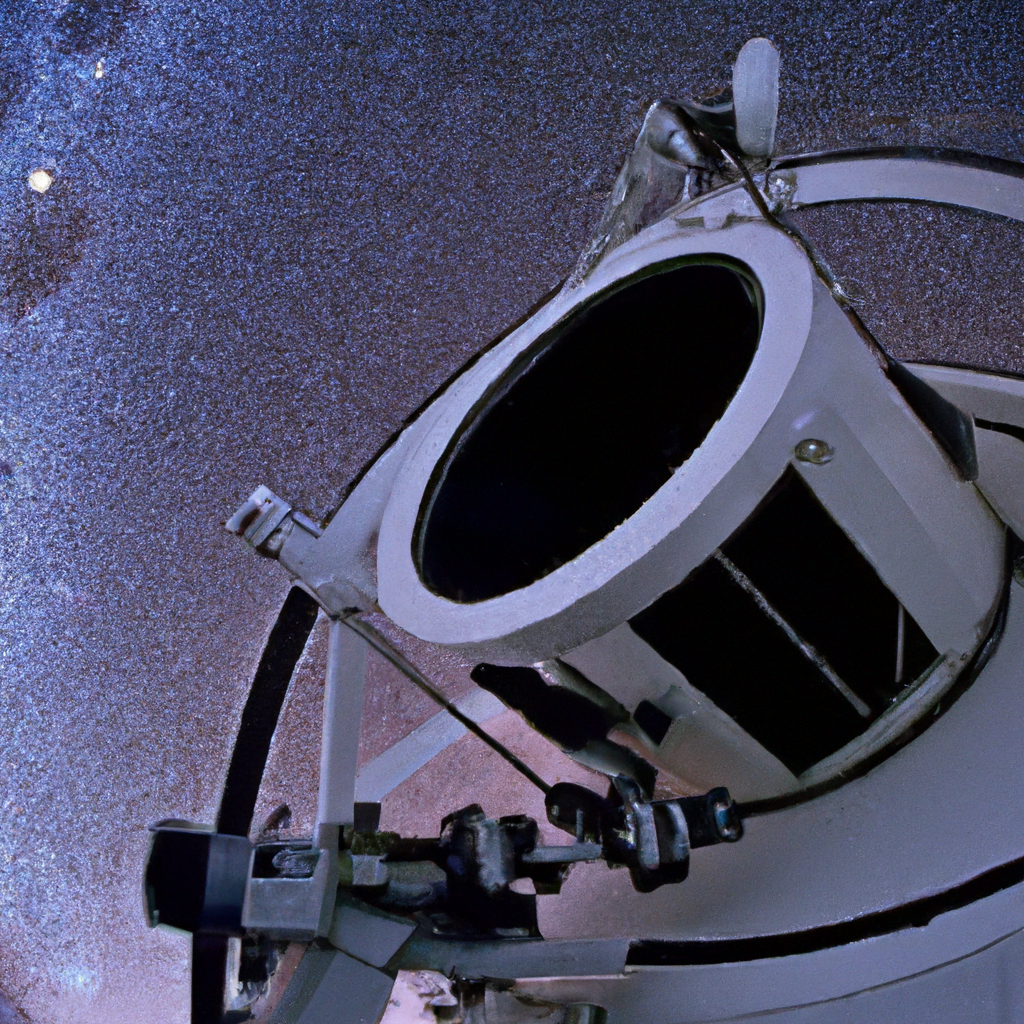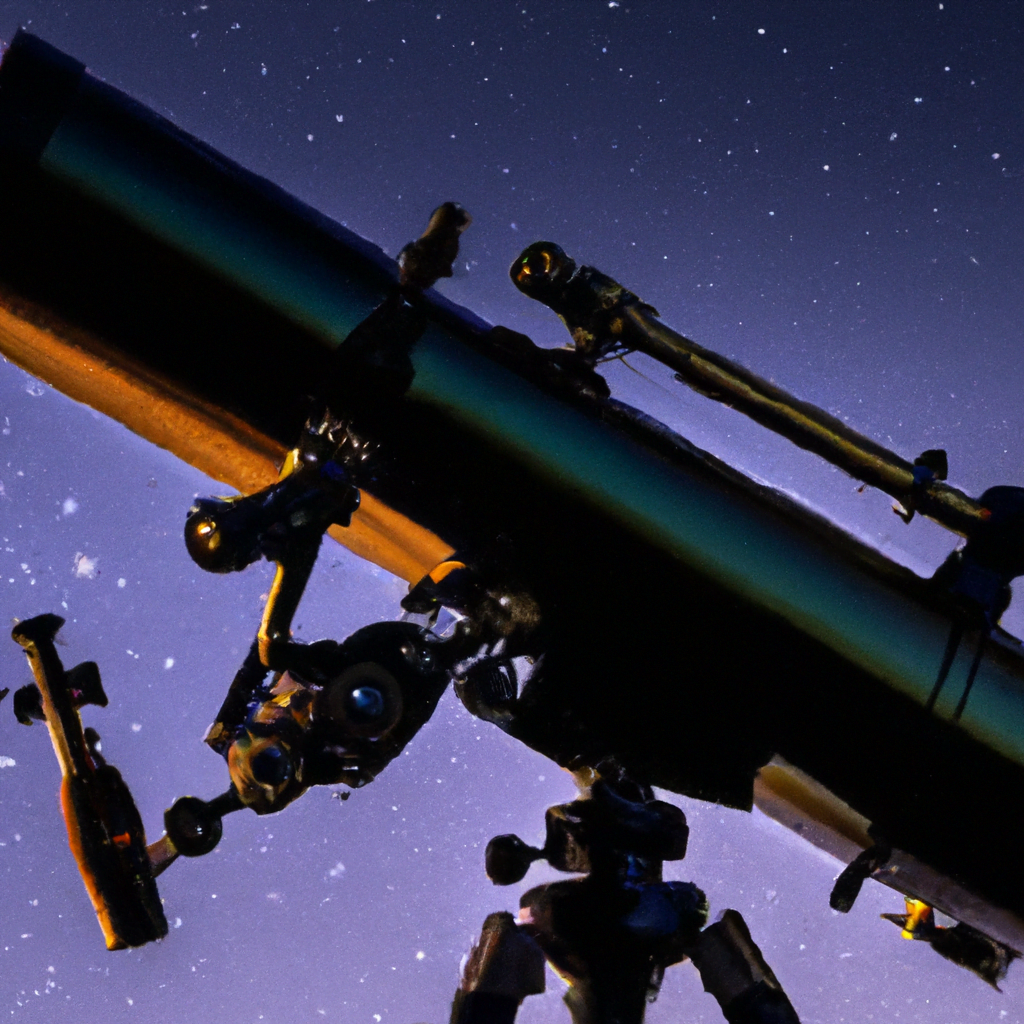Have you ever wondered how to calculate the power of your telescope? The power of a telescope, also known as its magnification, plays a crucial role in determining the clarity and detail of celestial objects you can observe. This measurement enables you to understand how much closer a telescope can bring distant objects, such as stars and planets, into view. By grasping the basics of calculating telescope power, you’ll be equipped with the knowledge to enhance your cosmic exploration and uncover the mysteries of the universe. Let’s dive into the fascinating world of telescope power calculation!

Table of Contents
Understanding Telescope Power
Telescope power refers to the ability of a telescope to magnify an object and bring it closer to your eye. It is an important aspect to consider when choosing a telescope, as it determines the level of detail and clarity you will be able to observe. Understanding telescope power is crucial in order to make informed decisions about the equipment you use for stargazing or any other observations.
Definition of Telescope Power
Telescope power, also known as magnification, is the property of a telescope that determines how much larger an object appears when viewed through the telescope compared to the naked eye. It is expressed as a numerical value, indicating the level of magnification achieved. Higher magnification values result in larger images, but there are certain limitations and considerations when it comes to calculating and using telescope power effectively.
Importance of Calculating Telescope Power
Calculating telescope power is vital as it directly affects the quality and clarity of the images you observe. By understanding the power of your telescope, you can make informed decisions about the equipment you use and the objects you observe. With the right power, you can bring distant objects into closer view, revealing intricate details that may be invisible to the naked eye. Additionally, calculating telescope power allows you to compare the capabilities of different telescopes, aiding in your decision-making process when purchasing new equipment.
Determining Telescope Power
Determining the power of your telescope involves considering three key factors: focal length, aperture size, and eyepiece selection.
Focal Length
The focal length of a telescope refers to the distance between the lens or mirror of the telescope and the point where the image is in focus. It is one of the crucial factors that determine the power of a telescope. A longer focal length results in higher magnification, meaning objects appear larger when viewed through the telescope. Conversely, a shorter focal length will provide lower magnification.
Aperture Size
Aperture size plays a significant role in determining the power of a telescope. The aperture refers to the diameter of the telescope’s primary lens or mirror. A larger aperture allows more light to enter the telescope, resulting in brighter and more detailed images. It also contributes to higher resolution and, consequently, higher magnification.
Eyepiece Selection
The choice of eyepiece impacts the magnification achieved with a telescope. Eyepieces come in varying focal lengths and, therefore, produce different levels of magnification. To calculate the power of your telescope, you need to know the focal length of your eyepiece. By dividing the focal length of your telescope by the focal length of your eyepiece, you can determine the magnification achieved.

Calculating Telescope Power
Understanding magnification and knowing how to calculate it are essential for determining the power of your telescope accurately.
Understanding Magnification
Magnification is the factor by which a telescope enlarges the observed image of an object. It enhances your ability to see finer details and makes distant objects appear closer. However, it is important to note that higher magnification is not always better, as it can also lead to decreased image brightness and reduced image quality.
Calculating Magnification
To calculate the magnification of a telescope, you need to divide the focal length of the telescope by the focal length of the eyepiece being used. For example, if your telescope has a focal length of 1000mm and you are using an eyepiece with a focal length of 10mm, the magnification achieved would be 100x (1000/10).
Calculating Resolving Power
Resolving power is the ability of a telescope to distinguish fine details in an image. It is determined by the aperture size of the telescope, with larger apertures providing higher resolving power. To calculate the resolving power of your telescope, you can use the formula of 116 divided by the aperture diameter in millimeters.
Factors Affecting Telescope Power
Several factors can affect the power and overall performance of a telescope. It is important to understand these factors to ensure optimal viewing experiences.
Atmospheric Conditions
The atmosphere can have a significant impact on the power of a telescope. Factors like humidity, temperature, and air turbulence can reduce the clarity of the images observed. Unfavorable atmospheric conditions can limit the amount of detail visible through the telescope, even if it has the potential for high magnification.
Telescope Quality
The quality of a telescope, including the precision of its optics and construction, can greatly influence its power. High-quality telescopes tend to have better coatings, reducing internal reflections and increasing image contrast. Investing in a well-built telescope will enhance its power and ensure a more enjoyable observing experience.
Eyepiece Quality
The quality of the eyepieces used with a telescope also affects its power. Higher-quality eyepieces often provide better image clarity, contrast, and field of view. Opting for good-quality eyepieces can maximize the potential of your telescope’s power, allowing for more detailed and immersive observations.

Tips for Maximizing Telescope Power
To make the most of your telescope’s power and enhance your observing experience, consider the following tips:
Choosing the Right Eyepiece
Experiment with different eyepieces to find the ideal combination for the objects you want to observe. Consider factors such as the eyepiece’s focal length, field of view, and image quality. Finding the right eyepiece will help you achieve the desired level of magnification and maximize your telescope’s power.
Maintaining Optical System
Keep your telescope’s optical system clean and in good condition to ensure optimal performance. Regularly check for dust, debris, or moisture, and clean the lenses or mirrors as necessary. A clean optical system will provide sharper and clearer images, maximizing the power of your telescope.
Adjusting Atmospheric Conditions
While you cannot control the atmosphere, there are steps you can take to improve viewing conditions. Observing on nights with good transparency and stability can make a significant difference. Avoid observing near sources of heat or air pollution, as these can create disturbances in the atmosphere and affect the power of your telescope.
Telescope Power and Image Quality
Understanding the relationship between telescope power and image quality is important to achieve the best possible viewing experience.
Balancing Power and Image Brightness
Higher telescope power may result in larger magnification, but it can also decrease image brightness. Finding the right balance between power and image brightness is essential. In some cases, using lower magnification can provide brighter and more detailed views, particularly when observing faint celestial objects.
Impact of Power on Contrast and Detail
Different levels of power can influence the contrast and level of detail visible in an image. While higher magnification can bring out finer details, it can also exaggerate atmospheric disturbances and reduce overall image quality. Experimenting with various magnifications will help you find the optimal level of power to achieve the desired contrast and detail in your observations.

Comparing Telescope Power with Other Optical Devices
Telescope power differs significantly from other optical devices such as binoculars, spotting scopes, and microscopes. Understanding these differences can help you choose the right equipment for your specific needs.
Difference from Binoculars
Binoculars are primarily designed for handheld use and offer lower power compared to telescopes. They typically have fixed magnifications and smaller apertures, limiting their ability to observe distant celestial objects with the same level of detail as a telescope. However, binoculars provide a wider field of view and may be more suitable for certain types of observations, such as scanning the night sky for constellations.
Difference from Spotting Scopes
Spotting scopes are designed for terrestrial observation, primarily for bird watching or nature observation. They often have zoom eyepieces, allowing for more versatile magnification ranges. However, spotting scopes typically have smaller apertures, limiting their power compared to telescopes. They are not specifically designed for astronomy purposes, and their image quality may not match that of a dedicated telescope.
Difference from Microscopes
Microscopes, unlike telescopes, are used for observing objects on a microscopic scale. They provide high levels of magnification and are designed to resolve minute details in samples. While both telescopes and microscopes involve magnification, their purpose and application greatly differ.
Common Misconceptions about Telescope Power
Understanding the common misconceptions about telescope power can help you make informed decisions and avoid unrealistic expectations.
Power Equals Better Images
One common misconception is that higher telescope power directly translates to better image quality. While power plays a role in magnification, it is not the sole factor that determines image quality. Other aspects such as aperture size, optical quality, and atmospheric conditions also significantly impact the images observed through a telescope.
Higher Power Means Better Observations
While higher magnification can reveal finer details, it does not always result in better observations. Atmospheric conditions and image brightness can be negatively affected at higher powers, making it harder to discern details and reducing overall image quality. Additionally, observing certain objects, such as large star clusters or extended nebulae, may require lower magnification to fit the entire object within the field of view.
Power Determines the Telescope’s Worth
The power of a telescope is just one aspect to consider when evaluating its worth. The quality of optics, construction, and overall performance are equally important factors. A telescope’s value should be assessed based on its ability to provide clear, detailed, and enjoyable views, rather than solely relying on its power.
Measuring Telescope Power
There are several methods to measure the power of a telescope accurately:
Using Barlow Lenses
Barlow lenses are optical accessories that increase the effective focal length of a telescope. By inserting a Barlow lens between the telescope and the eyepiece, you can achieve higher magnification. They come in different magnification factors, allowing you to customize the power of your telescope according to your needs.
Using Barlow Formula
The Barlow formula is a simple mathematical equation used to calculate the magnification achieved through the use of a Barlow lens. By dividing the focal length of the telescope by the Barlow lens factor, you can determine the magnification attained. For example, if your telescope has a focal length of 1000mm and you are using a 2x Barlow lens, the magnification achieved would be 200x (1000/2).
Measuring Power with a CCD Camera
A CCD (charge-coupled device) camera can be utilized to measure the power of a telescope. By capturing images of certain objects or calibration targets, you can measure the size of the object in pixels and compare it to its known size. This method allows for a more precise measurement of power when used with appropriate software.
Understanding the Limitations of Telescope Power
Telescope power is subject to certain limitations that can impact the usability and overall viewing experience.
Physical and Optical Limitations
Telescope designs have physical and optical limitations that affect their power. Not all telescopes can achieve the same levels of magnification. Compact telescopes or those with smaller apertures may have lower power potential compared to larger and more advanced models. Understanding the limitations of your specific telescope model will help you set realistic expectations for its performance.
Seeing Conditions
The atmosphere plays a crucial role in the power of a telescope. Atmospheric conditions can limit the achievable details and clarity in observations. Turbulence, air temperature variations, and air pollution can all degrade the image quality, regardless of the telescope’s power. Choosing nights with excellent seeing conditions can help mitigate these limitations.
Telescope Design Limitations
Different telescope designs have their own strengths and limitations. Refractor telescopes, for example, tend to have higher power potential due to their longer focal lengths, but they can be bulkier and more expensive compared to other designs. Reflecting telescopes, on the other hand, often offer a good balance of power and affordability. Understanding the limitations of different telescope designs will assist in selecting the right telescope for your specific needs.
In conclusion, understanding telescope power is essential for anyone interested in exploring the wonders of the universe. By calculating and optimizing the power of your telescope, you can enjoy detailed and immersive views of celestial objects. Remember to consider factors such as focal length, aperture size, and eyepiece selection when determining the power of your telescope. Additionally, balance power with image brightness and consider other factors such as atmospheric conditions and telescope quality. By following these tips and understanding the limitations, you can make the most of your telescope and embark on unforgettable stargazing experiences.
